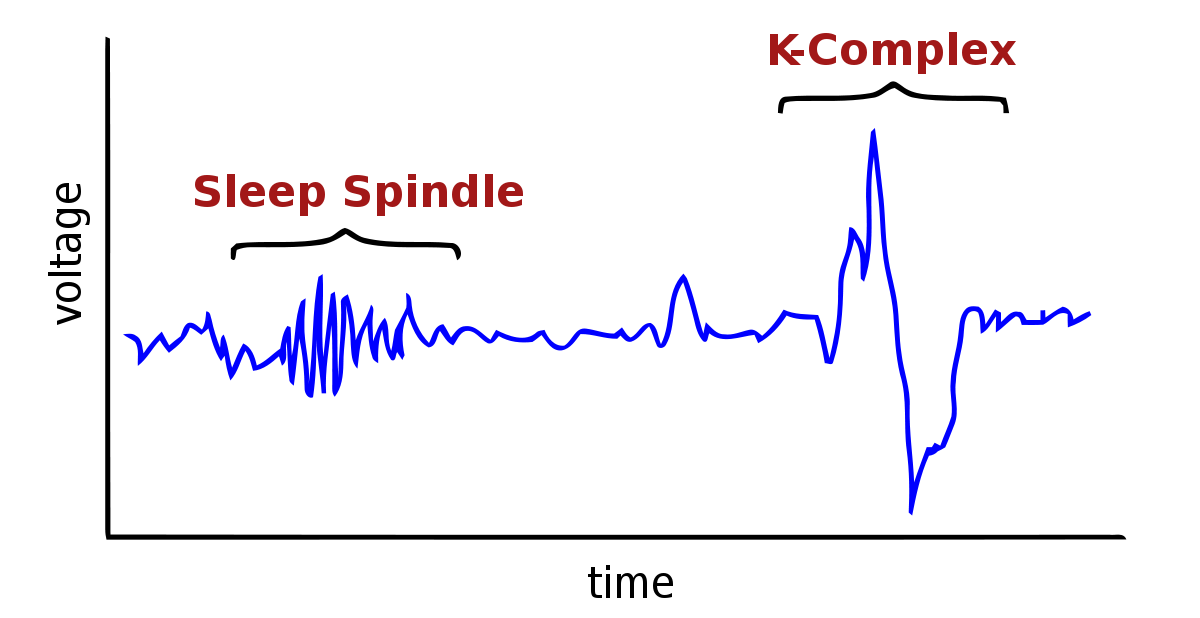Answer: A sleep spindle is a particular waveform that is observed in the EEG traces of a person in the early stages of non-REM sleep.
When a person is awake, networks of their brain cells are generally asynchronous - they do not fire together in any sort of distinct pattern. There is much noise as individual neurons spike on their own patterns, and the neural network does not exhibit any obvious patterns. However, when a person starts to sleep, neurons will start to fire as a group, and this synchronous activity can be measured at the scalp through an electroencephalogram, or EEG.
A sleep spindle is a rapid burst of 12-14 Hz oscillatory activity due to synchronized neural activity between the thalamic reticular nuclei and other areas of the thalamus. They are sometimes also called sigma bands or sigma waves. Sleep spindles may occur every 5-15 seconds.
A current leading hypothesis about the function of sleep spindles is for overnight memory consolidation. After extensive declarative memory acquisition sessions, the frequency of sleep spindles increases. Additionally, the increase in frequency of sleep spindles directly correlates with how well the memory was maintained in future tests.
A person with an increased frequency of sleep spindles may be more resistant to being awoken by outside stimuli during stage 2 of NREM sleep. On the contrary, a person with fewer sleep spindles may be more easily awoken by stimuli (light sleepers). This is achieved through a distortion of the incoming neural signals from the auditory system (Interplay between spontaneous and induced brain activity during human non-rapid eye movement sleep.)
